Invented by Scott Pappada, ANALYTIC DIABETIC SYSTEMS LLC, Aptima Inc
One of the key factors driving the growth of this market is the rising need for improved patient outcomes and safety. Clinical support systems and methods play a crucial role in reducing medical errors, improving diagnosis accuracy, and enhancing treatment planning. These systems leverage advanced technologies such as artificial intelligence (AI), machine learning, and data analytics to analyze vast amounts of patient data and provide evidence-based recommendations to healthcare providers.
The adoption of electronic health records (EHRs) has also contributed to the growth of the market for clinical support systems and methods. EHRs enable healthcare professionals to access comprehensive patient information, including medical history, lab results, and medication records, in real-time. Clinical support systems integrated with EHRs can leverage this data to provide personalized treatment plans, drug interaction alerts, and clinical decision support.
Furthermore, the increasing prevalence of chronic diseases and the aging population have created a need for more efficient and cost-effective healthcare solutions. Clinical support systems and methods help in managing chronic conditions by providing remote patient monitoring, telehealth services, and personalized care plans. These systems enable healthcare professionals to remotely monitor patients’ vital signs, track their progress, and intervene in a timely manner, reducing the need for hospital visits and readmissions.
The market for clinical support systems and methods is also driven by the growing focus on value-based care and population health management. Healthcare organizations are increasingly shifting from fee-for-service models to value-based reimbursement models, where the emphasis is on improving patient outcomes and reducing costs. Clinical support systems and methods help in achieving these goals by enabling proactive care management, risk stratification, and population health analytics.
However, despite the numerous benefits, the market for clinical support systems and methods faces certain challenges. One of the major challenges is the interoperability of different systems and technologies. Healthcare organizations often use multiple systems and tools, and ensuring seamless integration and data exchange between these systems can be complex. Standardization efforts and the adoption of interoperability standards such as HL7 and FHIR are being made to address this challenge.
Another challenge is the concern over data privacy and security. Clinical support systems and methods deal with sensitive patient information, and any breach of data can have serious consequences. Healthcare organizations need to invest in robust cybersecurity measures and comply with regulations such as HIPAA to protect patient data.
In conclusion, the market for clinical support systems and methods is experiencing significant growth due to the increasing demand for efficient and effective healthcare solutions. These systems and methods have the potential to revolutionize healthcare delivery by improving patient outcomes, reducing medical errors, and enhancing care coordination. However, challenges such as interoperability and data security need to be addressed to fully realize the potential of these technologies.
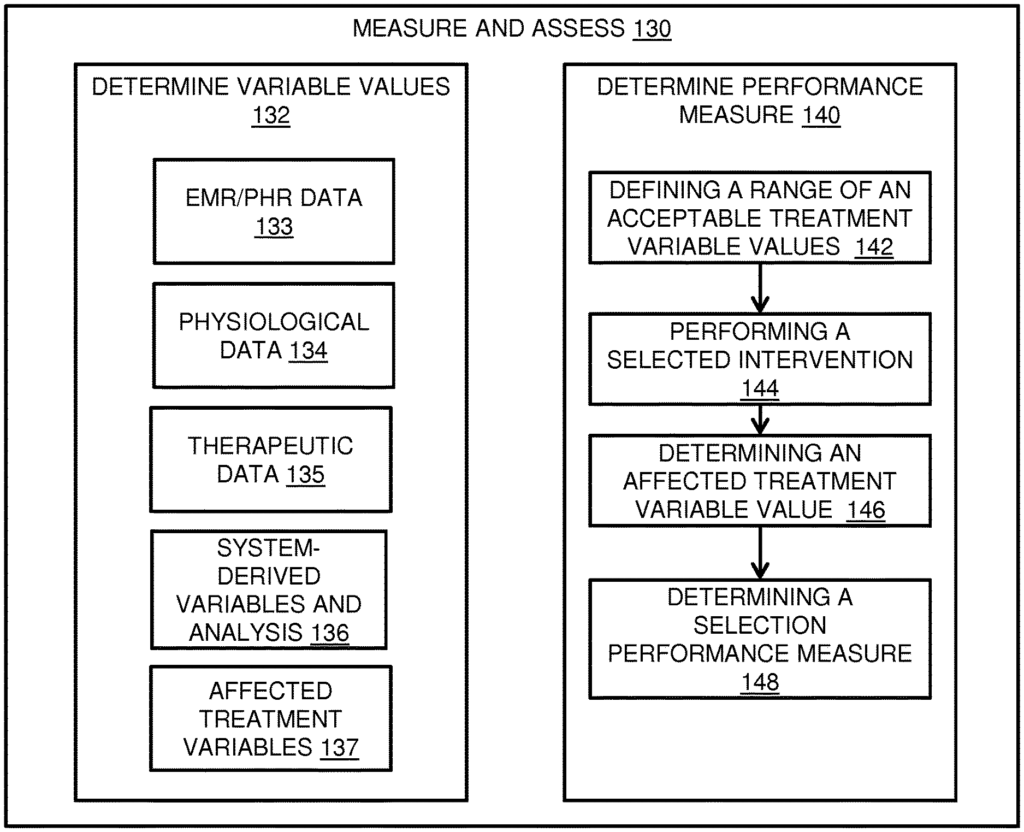
The ANALYTIC DIABETIC SYSTEMS LLC, Aptima Inc invention works as follows
Embodiments and methods of clinical support are disclosed.” In one embodiment, methods are disclosed for measuring clinical performance. These include defining an acceptable range of treatment variable values, performing the selected intervention, determining the affected treatment value, and determining the selection performance measure by comparing that affected treatment value to the acceptable values. In one embodiment, clinical decision training methods are disclosed. They include defining a subject’s treatment variable, selecting an appropriate intervention, modeling the chosen intervention, and presenting the visual representation. In one embodiment, clinical decision support methods are disclosed. They include defining a subject’s treatment variable, presenting a clinical decision variable, performing the selected intervention, and determining the affected treatment variable value.
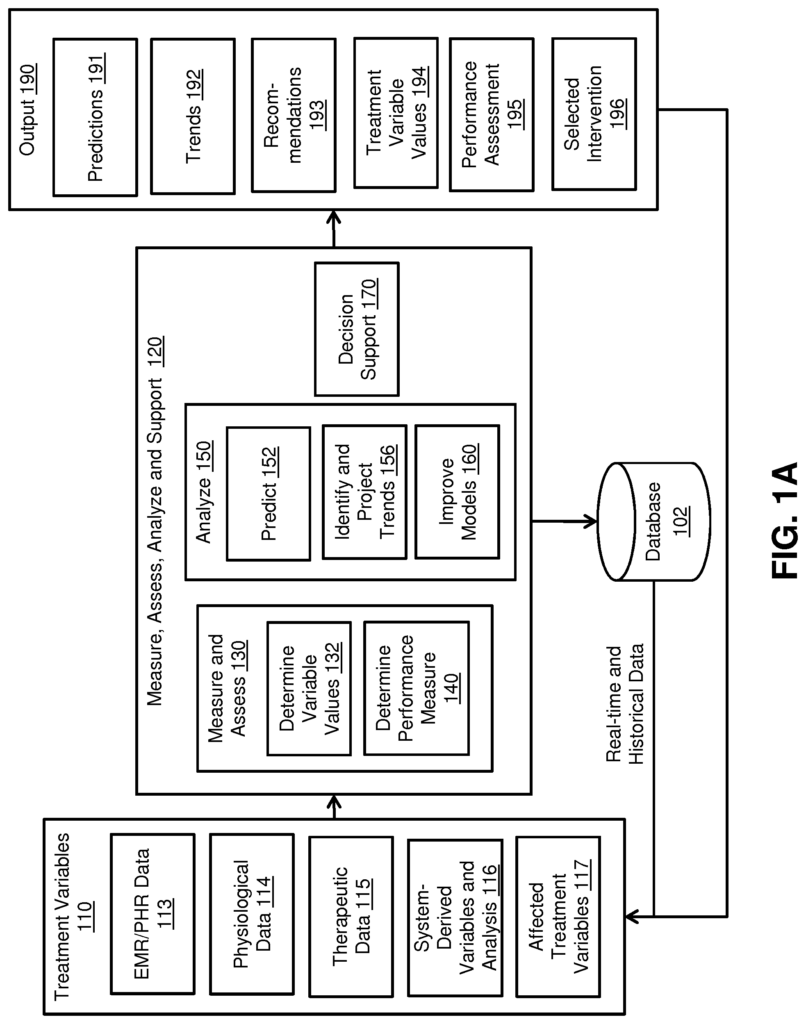
Background for Clinical Support Systems and Methods
1. “1.
This invention is a system and method to assist clinical decision makers. In particular, it relates to monitoring and modeling healthcare decisions in different outpatient and inpatient settings.
2. “2.
Optimal clinical/therapeutic decision making is extremely difficult as a number of factors affect physiological/therapeutic set points of interest.
The current visualization of electronic medical records is not optimal. Even though health-related data may be available, the EMR data is difficult to present and use for decision support, even by the most experienced clinicians.
Multiple clinical decision support systems exist with various algorithms/approaches tailored to provide decision support and feedback. Clinical decision support systems are not yet equipped with the detailed structure that the disclosed clinical support methods and systems provide. This may allow for a better picture of what is needed to support decisions. Some embodiments provide real-time feedback to patients and medical personnel so that they can learn complex interactions among physiological, treatment and EMR data.
One related solution to one initial tested embodiment of The Simulation, Training, And Clinical Decision Support (STACDS) system for optimizing inpatient glycemic control is a solution EndoTool which is developed by Monarch Medical Technologies (monarchmedtech.com/glucose-management-system-com-).
No system exists that combines clinical decision support, simulation, and training with real-time feedback on healthcare provider performance in a real-time tool or environment.
The real-time and historic performance measurement, analysis, and assessment is not currently available in any application. This can support healthcare staff utilization/allocation, objective performance reviews, education/training, and other key applications.
The following summary is only included to introduce certain concepts that are discussed in the Detailed description below. This summary does not cover all the subject matter that is protected. The claims at the end are intended to do so.
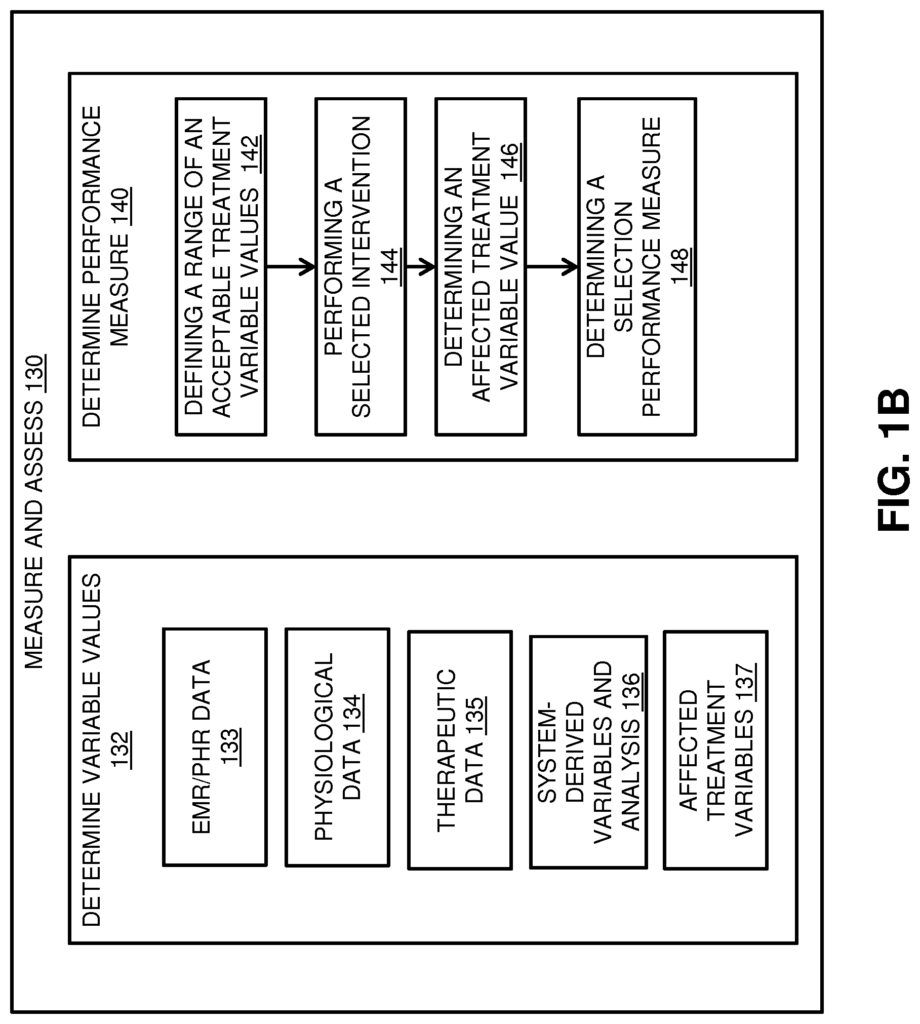
In one embodiment, a computer-implemented method for clinical decision modelling is disclosed. The method comprises monitoring at least a treatment variable, simulating an effect of an intervening on the set point of at least a treatment variable, and presenting a visual representation of the impact of the intervention. In some embodiments, the treatment variable value is a therapeutic/physiological set point of the patient.
In one embodiment, an example computer-implemented method for clinical measurement comprises defining an acceptable range of treatment variables for a subject’s treatment variable, performing the selected interventions, determining the affected treatment value after performing the chosen intervention and automatically determining the selection performance measure for the clinical measurement of the selected interventions by comparing affected treatment value to acceptable treatment variables. In some embodiments, defining a selected intervention is further included. The selection performance measure can then be automatically determined by comparing an affected treatment value with the acceptable treatment variables and comparing it to the selected interventions. Some embodiments include determining a plurality selection measures over a time period of performance, with each selection measure associated with a time within the time period. Then, determining which of the plurality is a good or bad selection measure, and identifying that time. In some embodiments, a selected intervention is automatically determined before the selected action is performed. In some embodiments automatically determining an intervention is done by using a model of the treatment variable to determine a recommended action. In some embodiments, identifying treatment or performance indicators is done by performing pattern recognition analyses on selected performance measurements or affected treatment variable values.
In one embodiment, an example computer-implemented method for clinical training is disclosed. The method comprises defining a treatment value of a simulation subject, selecting an appropriate intervention, modeling the intervention to the treatment value in order to determine the value of the treated variable and presenting a representation of that value. In some embodiments the machine learning algorithm is used to model the selected treatment variable intervention. Before selecting the intervention, some embodiments include selecting a test-intervention on the treated variable, entering the test-intervention into a prediction model, determining an affected treatment value over selected time by modeling a test-intervention on the affected variable over selected time, and presenting a visually represented affected treatment value over selected time. Some embodiments include automatically determining an intervention using a control system to model the treated variable value.
In one embodiment, an example computer-implemented method for clinical decisions support is disclosed. It comprises defining a variable treatment of a patient, presenting atleast one decision support, performing a chosen intervention, and determining the affected value. In some embodiments, the method further comprises receiving a collection of historical treatment variable of the patient and identifying a pattern from those historical treatment variables. The decision support variable then includes the trend. In some embodiments identifying a pattern from the historical treatment variable of the subject includes using at least one of an unsupervised machine-learning algorithm and model, and a supervised algorithm and model. Some embodiments also include receiving a collection of historical treatment variable of the topic, identifying an event or events from the historical treatment variable of the subjet, receiving a collection of real-time variables of that subject, and comparing those one or two events to the real-time variables in order to estimate expected future trends/patterns. In some embodiments, the determining of a similarity between the set historical treatment variables and real-time treatment variable of the object, defining of a threshold for similarity, identifying of one or more events exceeding the threshold as exceptional events, and statistically analysing the exceptional event in order to estimate a future trend. In some embodiments presenting a variable for decision support comprises presenting one or more interventions on a treatment variable, selecting an intervention as a test, entering the test into a model to predict, determining the value of the test treatment over a specified time, and presenting the visual representation of that value. In some embodiments, determining a performance measure for selection is also included.
In one example embodiment, an computer-implemented system for clinical support, comprising a multimodal assessment and measurement layer configured monitor at least a treatment variable, a real time prediction layer configured simulate the impact of an intervention on at least a treatment variable, and a user interface configuration to present a presentation of the effect on the treatment variable of the therapeutic intervention, is disclosed.
In one embodiment, a computer-implemented system for clinical supports comprises a STACDS (System for Treatment and Decision Support) system that simulates the effects of interventions, clinical decisions and patterns of treatment variables and adverse outcomes. It also provides real-time and historic performance feedback to patients and medical personnel to ensure their clinical and therapeutic decision making leads to an optimal outcome and delivery of healthcare. This STACDS embodiment can integrate these capabilities in a single tool and system that supports augmented visualizations of EMR data, as well as optimization of healthcare delivery through simulation, training and clinical decision-support, both in real-time settings and retrospectively.
In some embodiments the treatment variable can be an analyte value and the acceptable range for the treatment variable to be a set of analyte values.
In some embodiments, clinical support systems and methodologies may be deployed and implemented on computers, PCs and laptops, smartphones and tablets, as well as other useful computing platforms.
BRIEF DESCRIPTION ABOUT THE VIEWS FROM THE DRAWINGS
The appended drawings illustrate specific embodiments of the invention, which will provide a more detailed description of how the advantages and features described above can be obtained. The accompanying drawings are used to describe and explain the invention in greater detail, while keeping in mind that they only depict typical embodiments and not the entire invention.
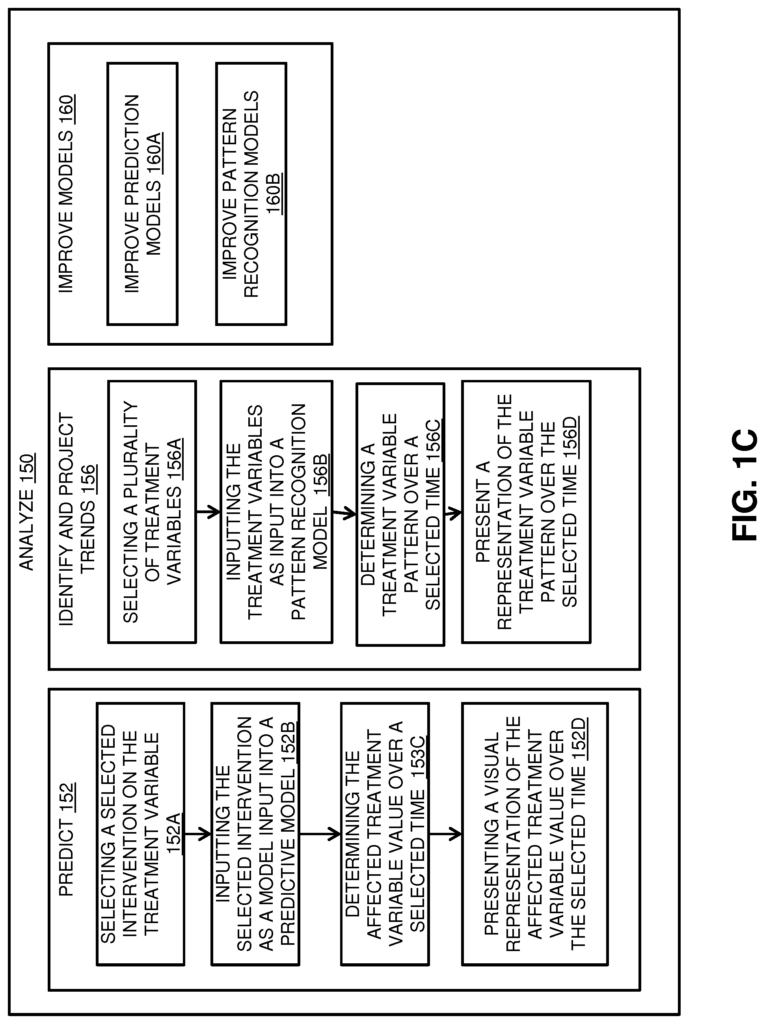
FIG. “FIG.
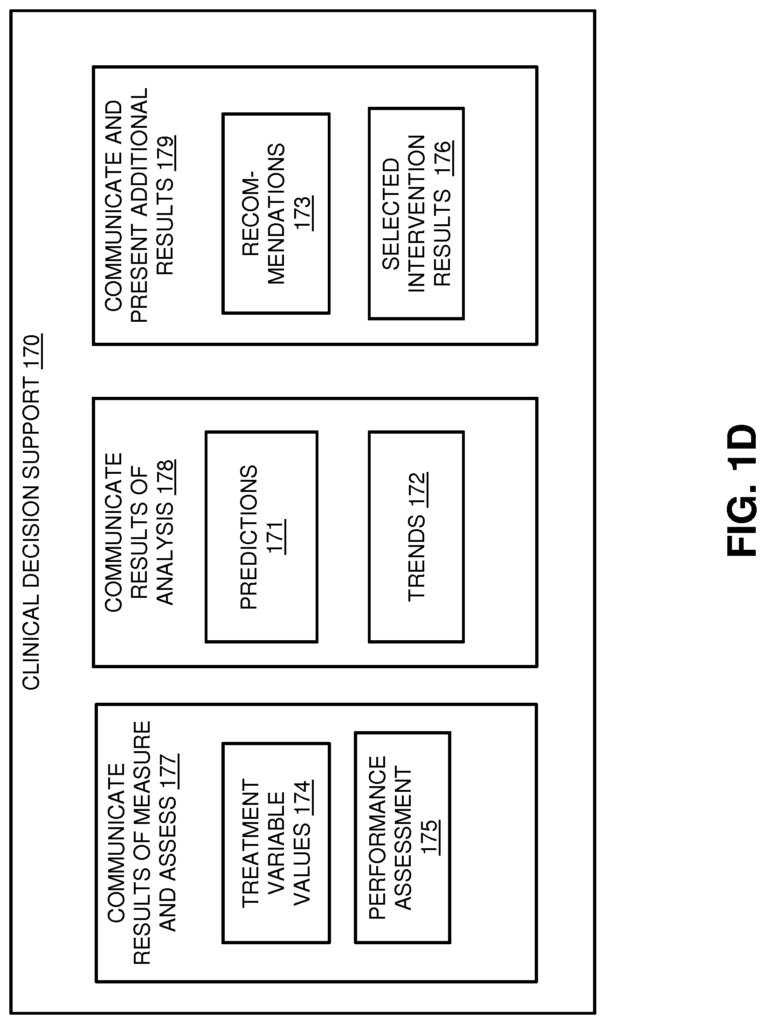
Click here to view the patent on Google Patents.
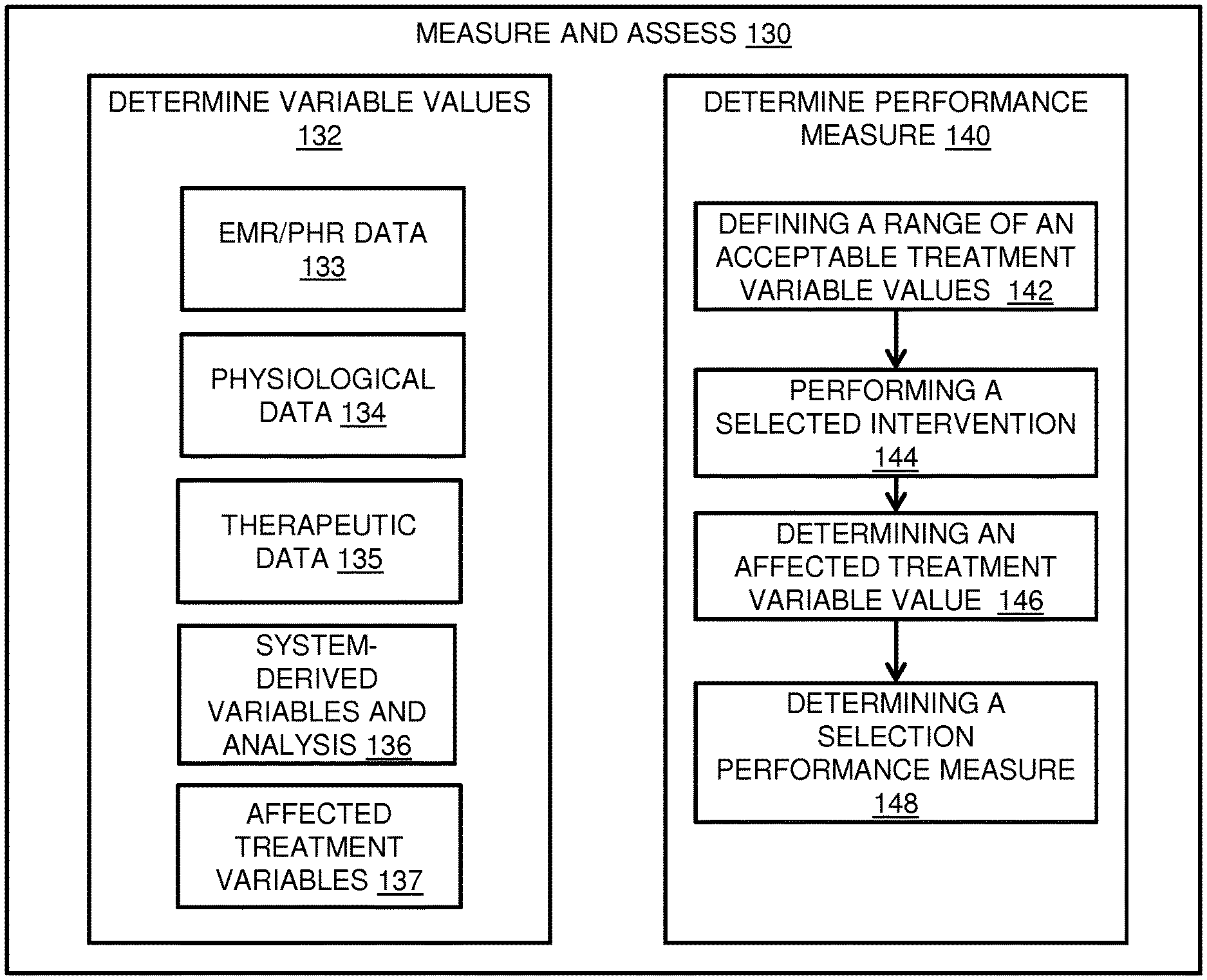
Leave a Reply